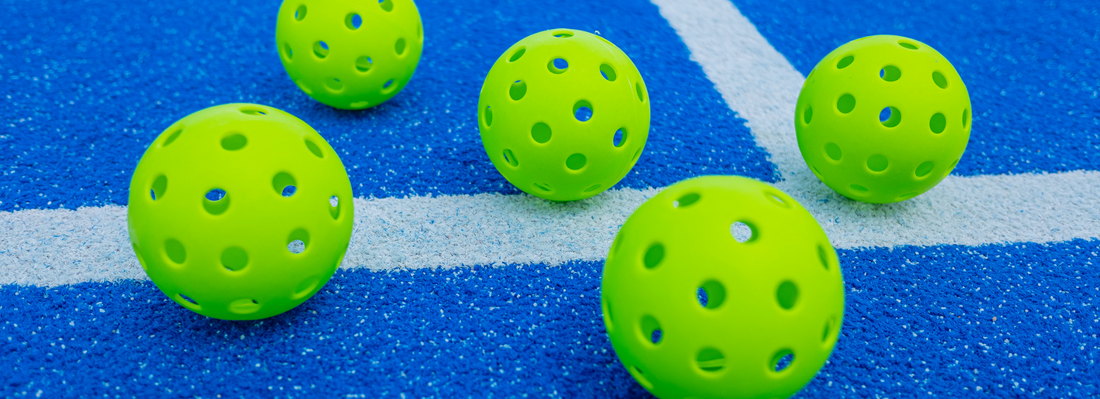
Decoding the Two-Bounce Rule: The Hidden Strategy Behind Pickleball’s Most Misunderstood Regulation
Share
Few rules in pickleball generate as much confusion—or as much opportunity—as the two-bounce rule. At first glance, it appears simple: each side must let the ball bounce once before volleys begin. Yet beneath that simplicity lies a strategic core that shapes the rhythm, pace, and psychology of the entire game. Understanding the two-bounce rule is not just about avoiding faults; it is about mastering the flow of the rally.
The Rule Explained
The two-bounce rule requires that the serve must bounce once in the receiver’s court and the return must bounce once in the server’s court before either team can hit the ball in the air. After those two bounces, volleys—shots hit before the ball touches the ground—are allowed.
This rule might sound like a minor detail, but it fundamentally defines how points develop. It ensures both teams have an equal chance to enter the rally, reducing the advantage of the serving team and promoting longer, more tactical exchanges.
Why the Rule Exists
Pickleball’s founders designed the two-bounce rule to make the game accessible and fair. Without it, the serving team could dominate immediately by rushing the net and attacking volleys before opponents could react. By enforcing two bounces, the rule slows the game’s tempo at the start of each point, giving both sides time to position themselves strategically.
This rule is one of the sport’s great equalizers, blending skill, patience, and anticipation into every rally.
The Strategy Within the Rule
The two-bounce rule may sound restrictive, but it offers a wealth of strategic depth.
1. The Serve as a Setup
A strong serve no longer guarantees an easy win. Because the ball must bounce, power serves must be followed by quick repositioning rather than aggression. Smart servers aim for depth and placement, forcing awkward returns that set up later control.
2. The Return as a Launchpad
The returning player holds a critical advantage. Since the serving team must let the return bounce, players can use this shot to dictate the pace. Deep returns push opponents back, buying valuable seconds to advance toward the non-volley zone—the most dominant position on the court.
3. The Third Shot: The Game Changer
After the two bounces, the rally transforms. The “third shot drop” often enters the equation here, a soft, arcing shot designed to neutralize aggressive play and draw both teams into a controlled exchange at the kitchen line. Understanding how to transition smoothly from the bounce phase to volleying separates advanced players from novices.
The Mental Game
The two-bounce rule demands patience. Impulsive players who rush to volley early often lose rhythm and commit faults. Instead, disciplined players use this brief phase to read opponents’ movement, anticipate shot angles, and plan their court positioning.
The rule teaches restraint—an underrated virtue in pickleball. It reminds players that strategy often trumps speed, and that control wins more rallies than chaos.
Common Mistakes to Avoid
Even experienced players misstep when it comes to the two-bounce rule.
- Volleying Too Early: Excitement leads many to swing before the ball bounces twice, resulting in instant faults.
- Poor Court Positioning: Failing to move forward after returning serve leaves players stranded in no-man’s-land.
- Ignoring the Transition Game: Players who don’t prepare for the third shot drop often find themselves on the defensive too quickly.
Awareness and anticipation are the keys to avoiding these errors.
How the Rule Enhances the Game
The genius of the two-bounce rule lies in how it shapes the game’s dynamics. It forces players to blend offense and defense in the same rally. Every serve and return becomes part of a larger chess match—balancing power, control, and movement.
By mandating patience at the start, the rule creates rallies that are strategic and engaging rather than one-sided and brief. It ensures pickleball remains a sport of wit as much as athleticism.
Conclusion
The two-bounce rule is more than a formality—it is the backbone of pickleball’s distinctive rhythm. It teaches patience, encourages thoughtful positioning, and levels the playing field between power hitters and tacticians. Those who master it discover that within its restriction lies creative freedom. The best players don’t fight the rule—they use it, turning each bounce into an opportunity to outthink their opponents and control the game’s tempo from the very first serve.












